
Different Types of Turkish Delight & Why It's So Good
In the West, the mere mention of Turkish delight conjures up images of snow witches and little children who don fur coats and wander off into adventures through the back of their wardrobes, not to mention a particular chocolate-coated bar that comes in a pink shiny packet.
But authentic Turkish delight is a traditional sweet from Turkey known as Lokum, which has been made for centuries. No trip to Turkey, nor a cup of Turkish coffee is complete without sampling this treat.
The History of Turkish Delight
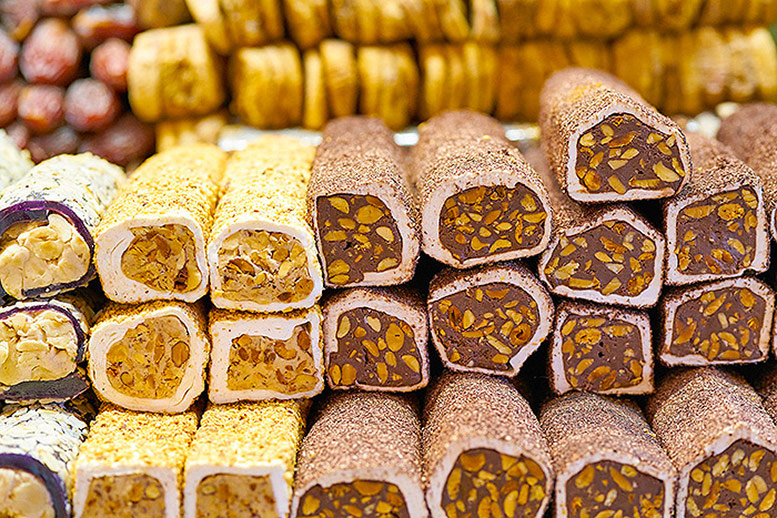
The Turkish word lokum originates from the Arabic term rahat ul-hulkum and means 'comforting the throat'.
During the Ottoman Empire, Turkish delight was an important part of the palace cuisine and although it dates back to 16th Century Anatolia, it only started to be produced for the masses in 1777.
There is much controversy over the invention of Turkish delight but it is popularly believed that a man named Bekir Efendi or Hacı Bekir (Hacı or Hajji is a title earned after completing the Hajj pilgrimage in Makkah) opened a confectionery shop in the district of Bahçekapı, Constantinople in 1777.
Among the many sweet treats sold at his shop, there was a concoction of starch and sugar that became known as lokum. The family business of Bekir Efendi, still known as the Hacı Bekir company is in its fifth generation.
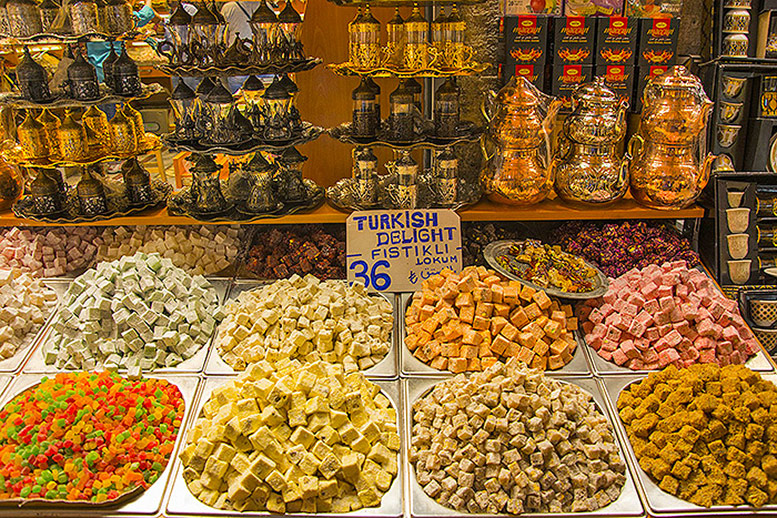
Some historians say that there is evidence showing that a recipe of a dessert similar to Turkish delight was used by the Arabs and the Persians centuries before Bekir Efendi discovered them. It is rather unclear however there is a more romantic tale of how the Turkish delight came to be, which is probably just a legend, but an interesting story nonetheless.
There is said to be a particular Sultan who believed that food was the way to please a woman and due to this he kept various exotic recipes in his armour, one day in an attempt to please somebody he ordered the palace chefs to produce something capable of the deed and thus the Turkish delight was born!
What is Turkish Delight?
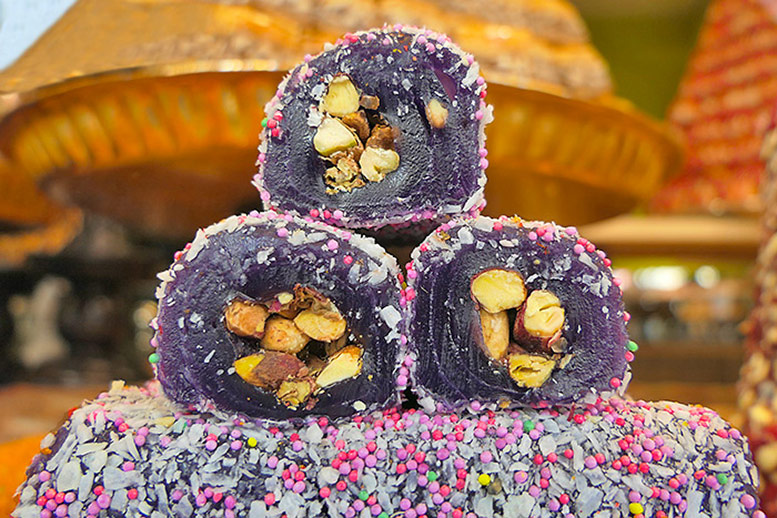
Turkish delight is a sweet made from starch and sugar that forms a gel, it can also be sweetened with honey or molasses instead and comes in a variety of amazing flavours.
Once the gel has been flavoured and formed, it can either be cut into cubes and dipped into icing sugar or desiccated coconut, or it can be layered with chopped nuts or even hazelnut paste and rolled.
Although Turkish delight is produced in different countries, the best and most authentic flavour can only be tasted in Turkey as the art of making this wonderful confection has been mastered there.
Popular Types of Turkish Delight
Lokum comes in many delightful flavours and types, some of the most popular ones include:
Pistachio
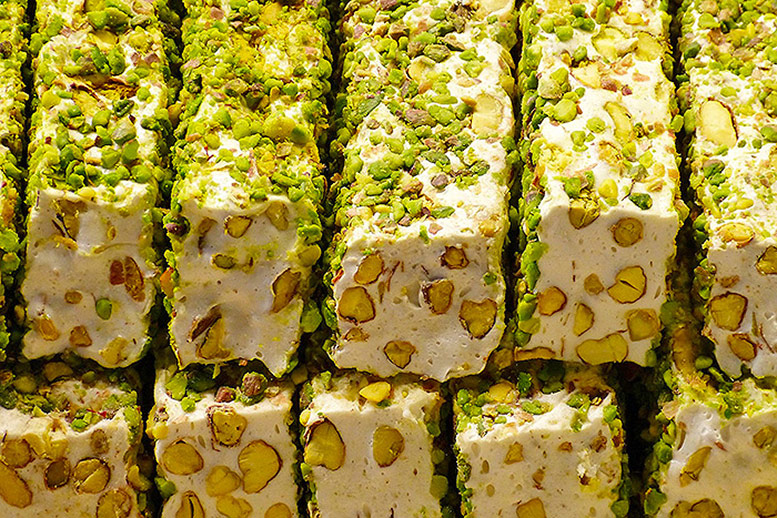
Turkey is one of the leading producers of pistachio nuts in the world, so it is not surprising that you will find Turkish delight in both cubes and rolls, and all sorts of flavours, that have been stuffed or dipped in a generous amount of these delicious and vibrant green nuts.
Rose
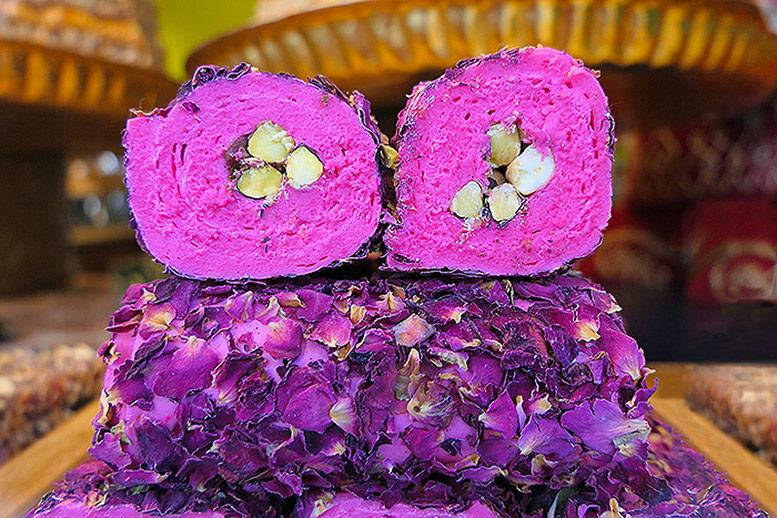
What could be a more lavish gift from a trip to Istanbul than a box of rose-flavoured Turkish delight? Although it is readily available in the classic style of pink cubes that have been flavoured with rosewater and dipped in icing sugar throughout many confectionery shops, step into the spice bazaars of Turkey and you will find rolls of Turkish delight that has been sweetened with honey, rather than sugar, and coated in dried rose petals.
Lemon
Excite your tastebuds by biting into some zesty lemon flavoured lokum, it's not only refreshing in taste but it's also one of the more classic flavours of Turkish Delight.
Pomegranate
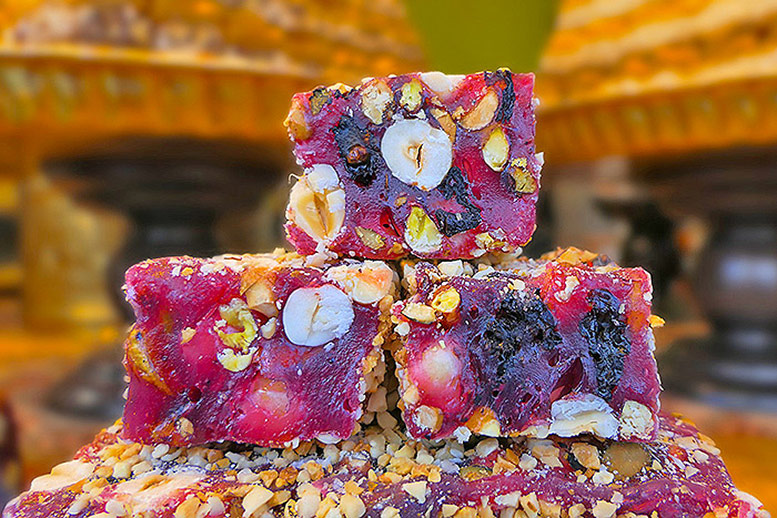
Turkey literally is pomegranate paradise, so you will find an abundance of pomegranate or nar flavoured treats such as molasses, drinks, tea, and of course, Turkish delight. Often coated in dried barberries or sliced pistachio nut, this is by far one of the most popular flavours of lokum.
Coconut
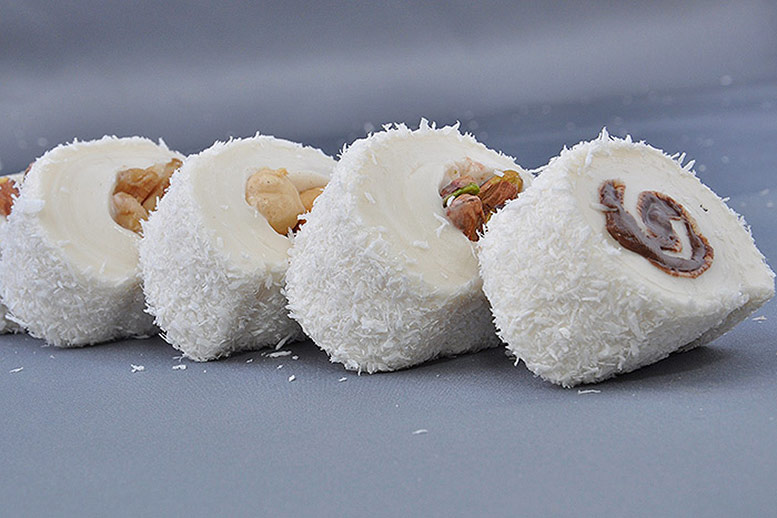
Coconut flavoured and coated Turkish delight is such a comforting treat and comes in a variety of rolls with mouthwatering fillings such as chopped nuts and even Nutella!
The Health Benefits of Turkish Delight
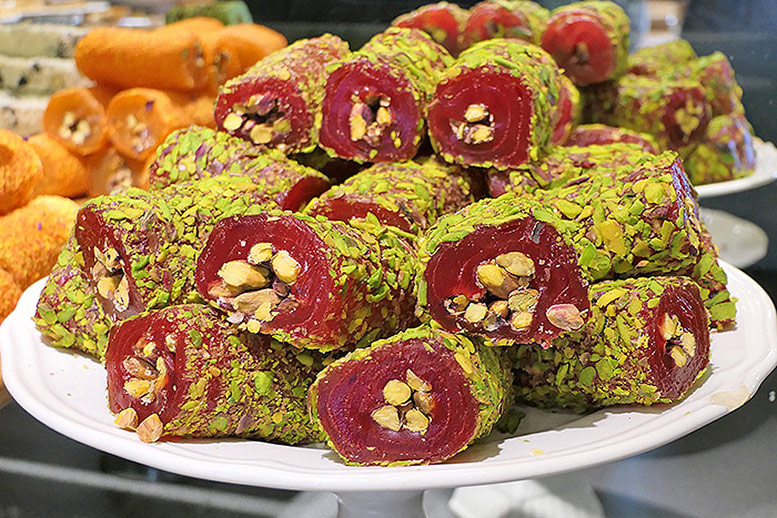
It is said that eating Turkish delight is good for eliminating toxins from the body and clearing up acne, as well as being a recommended option for sufferers of kidney disease.
Turkish delight is often made with energy-giving fillings such as nuts and coconut too. That said, it is a sensible idea not to overindulge in anything that's of such a sweet nature, so perhaps a small piece would make a suitable and healthier swap for when you feel like reaching out for a chocolate bar or a biscuit with your tea.
Turkish Delight From Around the World
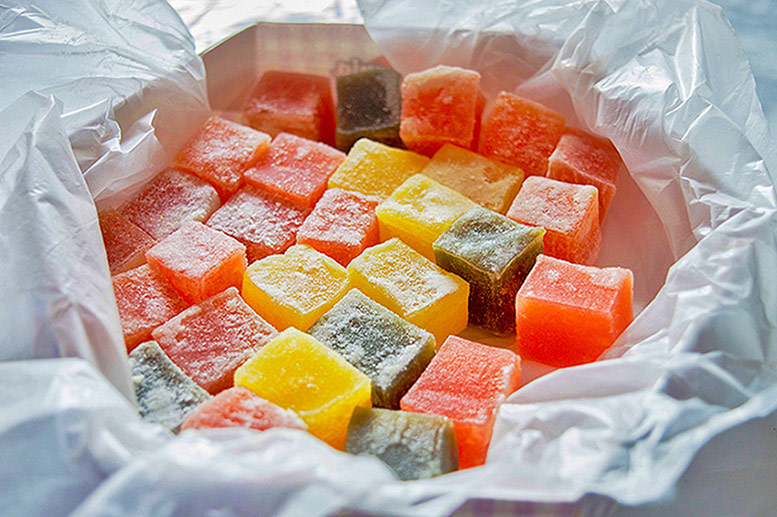
Due to the spread of the Ottoman Empire and therefore the spread of Turkish cuisine, many countries have variations of many Turkish dishes and the same goes for Turkish delight. Here are some of the countries that have their own version of the much-loved treat.
Bulgaria – Just like in Turkey, lokum (локум) is the name for Turkish delight in Bulgaria and is very popular in the country. Lokum from Bulgaria isn’t normally imported as the country produces its own.
Greece – Known as loukoumi (λουκούμι) in Greece, the Greek variation of the dessert is traditionally served with coffee. The most popular flavour of loukoumi in Greece in mastic and it is widely available in the country.
There is another confection in Greece similar to loukoumi known as akanes, which is flavoured with fresh goats milk butter rather than fruit essence which is used in the more commonly known loukoumi.
Akanes is exclusively made in the town of Serres and the origin of the name dates back to when the region was under Ottoman rule, akanes was originally called hakanes halva (coming from the Turkish word han and kağan, originally Mongolian terms and used as titles for rulers connoting that the confection was reserved for royalty).
Romania – In an attempt to weaken Ottoman control in Romania, a lot of the Turkish words that began to be implemented into the Romanian language were used in a pejorative sense. The word for Turkish delight in Romanian is rahat, which comes from the Arabic term rahat ul-hulkum, but the word also means “crap”. Despite the double meaning, rahat is still enjoyed in Romania and is also added to various traditional cakes.
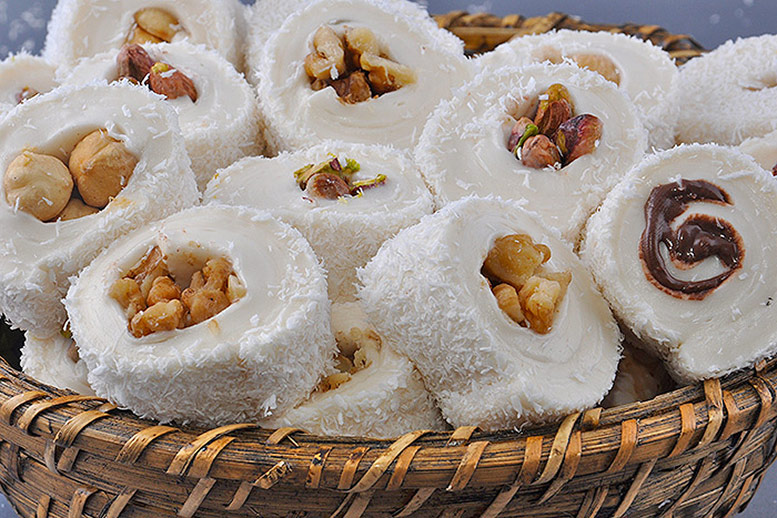
Albania and Former Yugoslavia – Known as rahat-lokum, ratluk or lokum in Albania and the former countries of Yugoslavia, Turkish delight was brought to this region by the Ottomans. It is traditionally consumed with coffee.
North America – Variations of Turkish delight have been produced by American companies since the 1930s and there is a wide range of exotic flavours of it. Some companies refer to them as rahat locoum clearly deriving from the Arabic name.
Nestlé produces a chocolate bar in Canada known as the Big Turk which is Turkish delight covered in chocolate.
Brazil – In Brazil, Turkish delight is known as Manjar Turco, Delícia Turca, Bala de Goma Síria or Bala de Goma Árabe. The confection was brought to Latin America by Arabs who settled there.
Britain – In Britain and a few other countries consisting of Ireland, Australia, Canada, and New Zealand, Turkish delight is enjoyed in the form of a chocolate bar named Fry’s Turkish Delight which is rose water flavoured Turkish Delight covered in chocolate. Turkish delight can also be found in many Turkish and international supermarkets, especially in London and other major cities.






COMMENTS
Thanks for sharing this amazing recipe.my family loved it.will be sharing this recipe with my friends.they will like it.
i want this